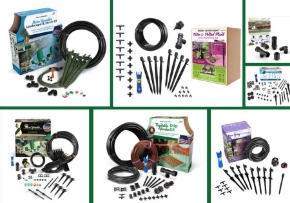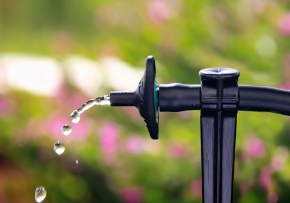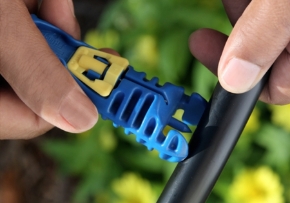The "Season of Giving" is upon us once again. Trees are going up, Thanksgiving is being planned, and shops are decking the halls and walls with all sorts of sparkling goodies. With this in mind, we here at Mister Landscaper thought we would do a little holiday shopping and check out some of the best garden and landscape products on the market. That way, you don't necessarily have to do all of the legwork, and you can bless the green thumb that is in your life with something that will thrill them and make their garden grow.
Let's start with tools:
Every gardener and landscaper alike needs to have the right equipment to achieve the best results.
We went to Corona Tools www.coronatoolsusa.com/
They sell quality tools for everything from pruning trees to wheeling around all of that mulch and dirt. Even rakes to clean up the mess left behind. It definitely beats trying to to it all with your bare hands.
A place for your garden to call home:
Raised Bed Garden Kits by Greenland Gardener
http://www.greenlandgardener.com/
Many people we talk to online are getting into building their own garden bed and creating a raised area to grow their plants. If you are like me, then using a tape measure, saw, hammer and nails is not going to happen. A Raised Bed Garden Kit is the way to go. We stumbled onto these kits at a local retailer, and they look fantastic. Simple to set up, all of the cutting and measuring has already been done. So no saws required. There are many benefits to using these kits to start your garden venture. Also, the materials used to make the kits themselves are recycled, which makes it a green product all around. Oh, and they are also manufactured in the United States, which makes them a hit with us for sure.
Watering your garden:
I know you would think we would only mention our products here, but we know of another company that creates excellent ways to use resources wisely when concerning water for landscapes and gardens.
That company is Aquabarrels, which has developed several systems to harvest and use rainwater to water gardens and landscapes. Most of those barrels can be used with drip irrigation and micro irrigation products, so not only can you recycle the water used, you can also conserve how you use that water so it lasts a long time.
www.aquabarrel.com/
They have numerous products to choose from, which are also made in the U.S.A.
Last, but certainly not least, is - that's right - Mister Landscaper:
Why do we make such a great Christmas gift for the green thumb in your life. Because we rock! Besides that, Mister Landscaper has been in the irrigation business for over 20 years, and its parent company over 100. We know water, and we know what plants need to grow to their healthiest. Our Drip Irrigation and Micro Irrigation products are developed specifically to be easy to install, so easy in fact that even young children can help put the system together. They can be moved around to fit the the landscape's design and to water some plants more then others. They are extremely durable, tested in all climates, and standing up to everything from the cold of the Northeast to the heat of the Florida sun. They are also manufactured in the United States, making them a product that helps support jobs and growth right here at home. We also save time - no digging required to set up our Drip Irrigation or our Micro Irrigation products.
Cost is - of course - important, too. Save money by purchasing one of our high quality kits that range from just $17.99 to $61.44. These kits include everything needed to set up irrigation in landscapes and gardens.
Check them out and see what you think.
There are literally tons of great garden and landscape products out there. These are just a handful that we found to be of great and consistent quality and value for those who are into growing beautiful gardens or landscapes.
Here is to finding the perfect gift, the one that keeps on growing!














